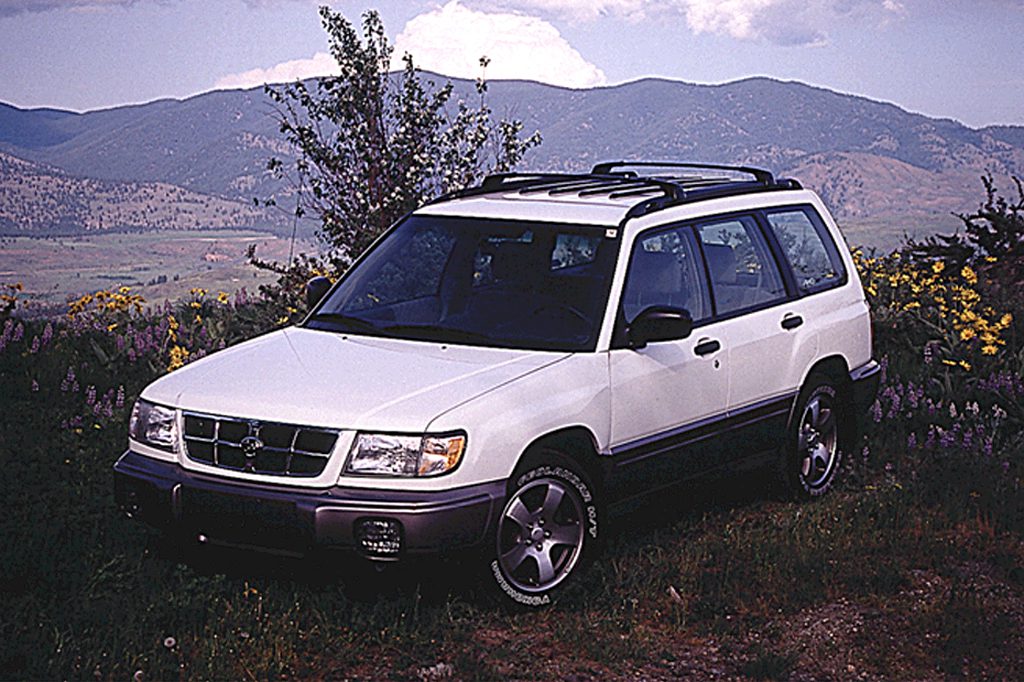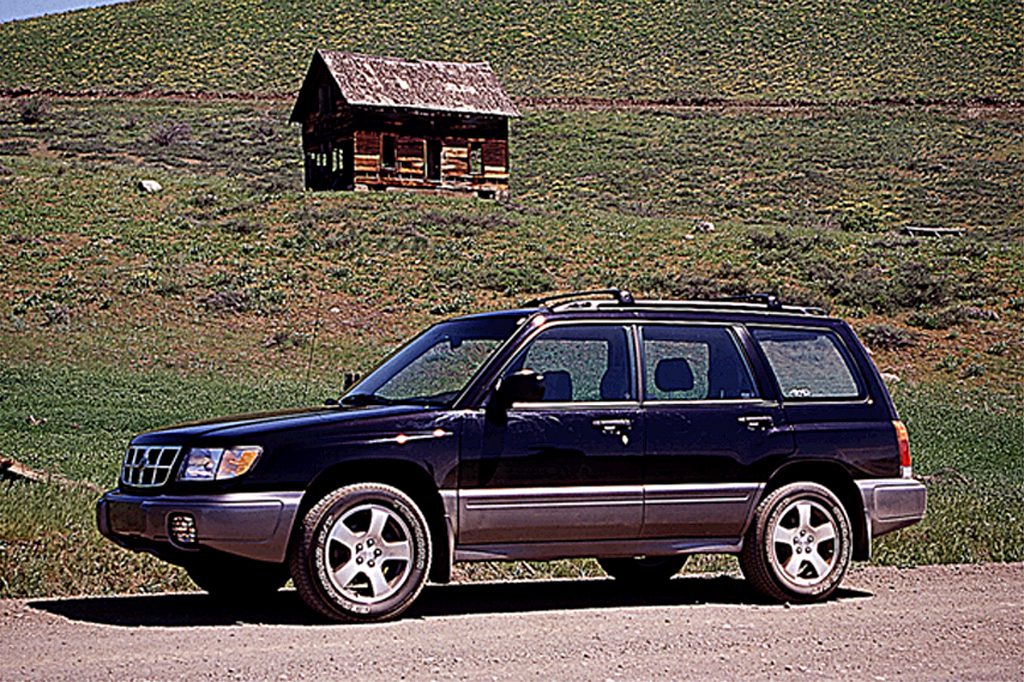| Compact SUV; Built in Japan |
|
|
| Good condition price range: $1,600 – $5,300* |

1998 Subaru Forester

2000 Subaru Forester

1998 Subaru Forester interior

2000 Subaru Forester

1998 Subaru Forester
| Pros: |
|
| Cons: |
|
Forester is a worthy competitor for the better-publicized CR-V and RAV4. Hybrids are supposed to drive like cars, perform on-road like SUVs, and look like trucks. This one does.
Overview
Subaru launched the Forester for 1998 as a “hybrid” vehicle, blending the attributes of a passenger car and a sport-utility vehicle. To create the Forester, Subaru took the subcompact Impreza station wagon, raised its roofline and added a few extra inches to the body length and width. Because wheelbase was increased only fractionally, interior dimensions grew only slightly over the Impreza. Subaru intended the resulting 5-passenger vehicle to be a “trucky” SUV in the spirit of the Honda CR-V and Toyota RAV4. The Legacy Outback and subcompact Outback Sport, in contrast, were basically just tall-built station wagons. Base, L, and S models went on sale. Each used Subaru’s horizontally opposed, 165-horsepower 2.5-liter 4-cylinder engine, borrowed from the compact Legacy. A 5-speed manual transmission was standard, and 4-speed automatic optional.Forester’s standard all-wheel-drive system sensed wheel slip and automatically sent power to the wheels with the most traction. No driver action was needed. Although ground clearance was elevated compared to the Impreza wagon, Forester had no provision for low-range gearing and no talent for serious off-road treks. Towing capacity was 2000 pounds. Standard equipment included air conditioning and split folding rear seats. L and S versions added antilock braking. The S edition also included rear disc brakes, larger wheels and tires, a chrome grille, bigger power mirrors, and an upgraded interior. In addition to the Honda CR-V and Toyota RAV4, Forester rivals included the Chevrolet Tracker, Kia Sportage, and (in 1999) the Suzuki Grand Vitara.
Yearly Updates
| 1999 Forester Revisions intended to quiet the Forester’s engine also added four pound-feet of torque. Transmissions were revised in an attempt to provide smoother, quicker shifts. New interior fabrics and colors were offered. Power side mirrors became standard on L models. Foresters also gained structural modifications intended to improve crashworthiness. Base-model Foresters could no longer get the optional leather upholstery and remote keyless entry system. |
| 2000 Forester Subaru trimmed the Forester lineup for 2000, dropping the base-trimmed model. That left L and upscale S editions on sale. The Forester L gained standard cruise control, while the S added a standard limited-slip differential. |
| 2001 Forester Forester got a minor facelift including a new chrome grille, reshaped headlights, and revised bumper and taillights for 2001. |
| 2002 Forester Forester got a standard retractable cargo-area cover and two new option packages for ’02. Replacing last year’s S Premium model was the OV Premium Package option. It added front side airbags, sunroof, and unique alloy wheels to the S. The new OK Package included the OV equipment plus leather upholstery. |
